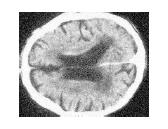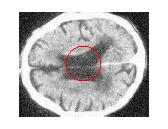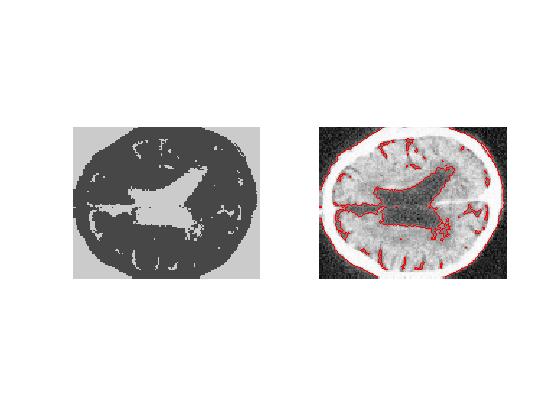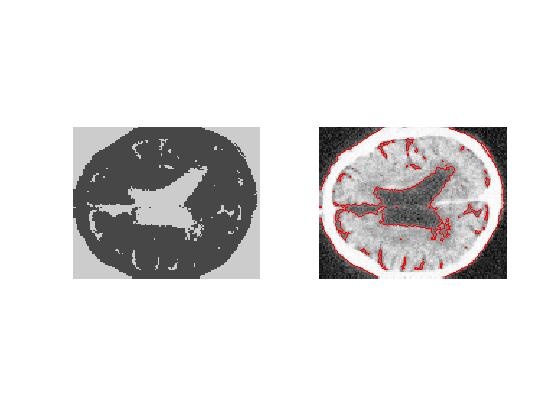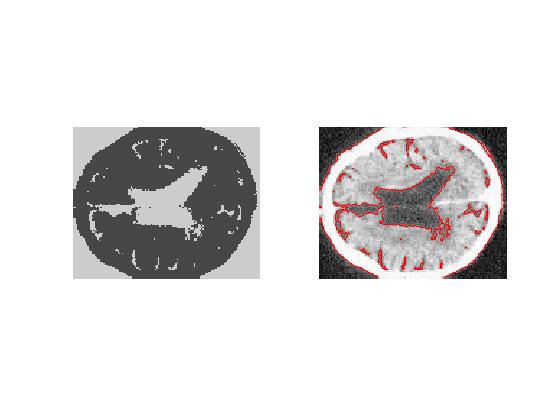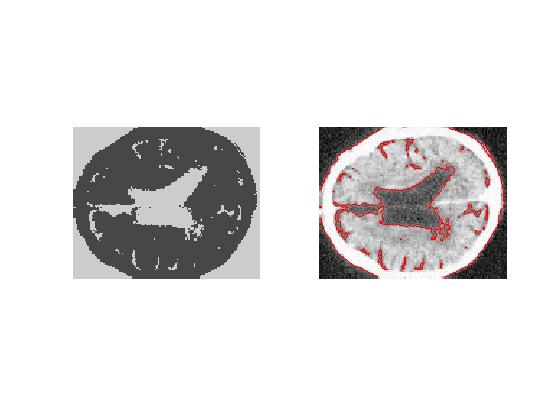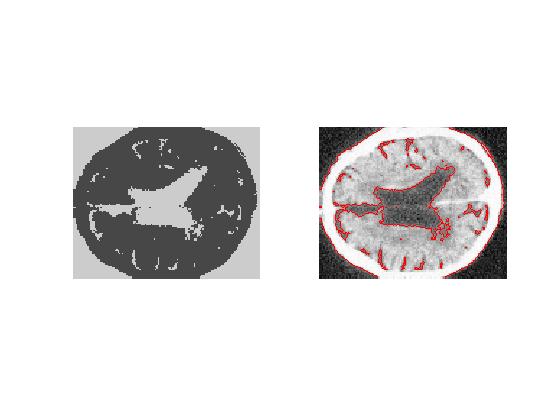博文
实战---无边缘活动轮廓模型(书Page105,图4.25)
|||
clear all;
close all;
clc;
close all;
clc;
Img=imread('brain.bmp');
Img=double(RGB2gray(Img));
Img=double(RGB2gray(Img));
figure(1);
imshow(uint8(Img));
imshow(uint8(Img));
[ny,nx]=size(Img);%获取图像大小
%%将初始曲线设为圆
%初始圆的圆心
c_i=floor(ny/2);
c_j=floor(nx/2);
%初始圆的半径
r=c_i/3;
%初始圆的圆心
c_i=floor(ny/2);
c_j=floor(nx/2);
%初始圆的半径
r=c_i/3;
%%初始化u为距离函数
u=zeros([ny,nx]);
for i=1:ny
for j=1:nx
u(i,j)=r-sqrt((i-c_i).^2+(j-c_j).^2);
end
end
u=zeros([ny,nx]);
for i=1:ny
for j=1:nx
u(i,j)=r-sqrt((i-c_i).^2+(j-c_j).^2);
end
end
%%将初始圆形曲线叠加在原始图片上
figure(2);
imshow(uint8(Img));
hold on;
[c,h]=contour(u,[0 0],'r');
figure(2);
imshow(uint8(Img));
hold on;
[c,h]=contour(u,[0 0],'r');
%%初始化参数
epsilon=1.0;%Heaviside函数参数设置
mu=250;%弧长的权重
dt=0.1;%时间步长
nn=0;%输出图像个数初始化
epsilon=1.0;%Heaviside函数参数设置
mu=250;%弧长的权重
dt=0.1;%时间步长
nn=0;%输出图像个数初始化
%%迭代计算开始
for n=1:1000
%%计算正则化的Heaviside函数
H_u=0.5+1/pi.*atan(u/epsilon);
%%由当前u计算出参数c1,c2
c1=sum(sum((1-H_u).*Img))/sum(sum(1-H_u));
c2=sum(sum(H_u.*Img))/sum(sum(H_u));
%%用当前c1,c2更新u
delta_epsilon=1/pi*epsilon/(pi^2+epsilon^2);%delta函数的正则化
m=dt*delta_epsilon;%临时参数m存储时间步长与delta函数的乘积
%%计算四邻点的权重
C1=1./sqrt(eps+(u(:,[2:nx,nx])-u).^2+0.25*(u([2:ny,ny],:)-u([1,1:ny-1],:)).^2);
C2=1./sqrt(eps+(u-u(:,[1,1:nx-1])).^2+0.25*(u([2:ny,ny],[1,1:nx-1])-u([1,1:ny-1],[1,1:nx-1])).^2);
C3=1./sqrt(eps+(u([2:ny,ny],:)-u).^2+0.25*(u([2:ny,ny],[2:nx,nx])-u([2:ny,ny],[1,1:nx-1])).^2);
C4=1./sqrt(eps+(u-u([1,1:ny-1],:)).^2+0.25*(u([1,1:ny-1],[2:nx,nx])-u([1,1:ny-1],[1,1:nx-1])).^2);
C=1+mu*m.*(C1+C2+C3+C4);
u=(u+m*(mu*(C1.*u(:,[2:nx,nx])+C2.*u(:,[1,1:nx-1])+C3.*u([2:ny,ny],:)+C4.*u([1,1:ny-1],:))+(Img-c1).^2-(Img-c2).^2))./C;
%%每运行两百次显示曲线和分片常数曲线
if mod(n,200)==0
nn=nn+1;
f=Img;
f(u>0)=c1;
f(u<0)=c2;
figure(nn+2);
subplot(1,2,1);imshow(uint8(f));
subplot(1,2,2);imshow(uint8(Img));
hold on;
[c,h]=contour(u,[0,0],'r');
hold off;
end
end
for n=1:1000
%%计算正则化的Heaviside函数
H_u=0.5+1/pi.*atan(u/epsilon);
%%由当前u计算出参数c1,c2
c1=sum(sum((1-H_u).*Img))/sum(sum(1-H_u));
c2=sum(sum(H_u.*Img))/sum(sum(H_u));
%%用当前c1,c2更新u
delta_epsilon=1/pi*epsilon/(pi^2+epsilon^2);%delta函数的正则化
m=dt*delta_epsilon;%临时参数m存储时间步长与delta函数的乘积
%%计算四邻点的权重
C1=1./sqrt(eps+(u(:,[2:nx,nx])-u).^2+0.25*(u([2:ny,ny],:)-u([1,1:ny-1],:)).^2);
C2=1./sqrt(eps+(u-u(:,[1,1:nx-1])).^2+0.25*(u([2:ny,ny],[1,1:nx-1])-u([1,1:ny-1],[1,1:nx-1])).^2);
C3=1./sqrt(eps+(u([2:ny,ny],:)-u).^2+0.25*(u([2:ny,ny],[2:nx,nx])-u([2:ny,ny],[1,1:nx-1])).^2);
C4=1./sqrt(eps+(u-u([1,1:ny-1],:)).^2+0.25*(u([1,1:ny-1],[2:nx,nx])-u([1,1:ny-1],[1,1:nx-1])).^2);
C=1+mu*m.*(C1+C2+C3+C4);
u=(u+m*(mu*(C1.*u(:,[2:nx,nx])+C2.*u(:,[1,1:nx-1])+C3.*u([2:ny,ny],:)+C4.*u([1,1:ny-1],:))+(Img-c1).^2-(Img-c2).^2))./C;
%%每运行两百次显示曲线和分片常数曲线
if mod(n,200)==0
nn=nn+1;
f=Img;
f(u>0)=c1;
f(u<0)=c2;
figure(nn+2);
subplot(1,2,1);imshow(uint8(f));
subplot(1,2,2);imshow(uint8(Img));
hold on;
[c,h]=contour(u,[0,0],'r');
hold off;
end
end
程序分析见http://bbs.sciencenet.cn/home.php?mod=space&uid=287000&do=blog&id=507513
https://blog.sciencenet.cn/blog-287000-507515.html
上一篇:绘制三维阴影表面图
下一篇:绘制区域图
